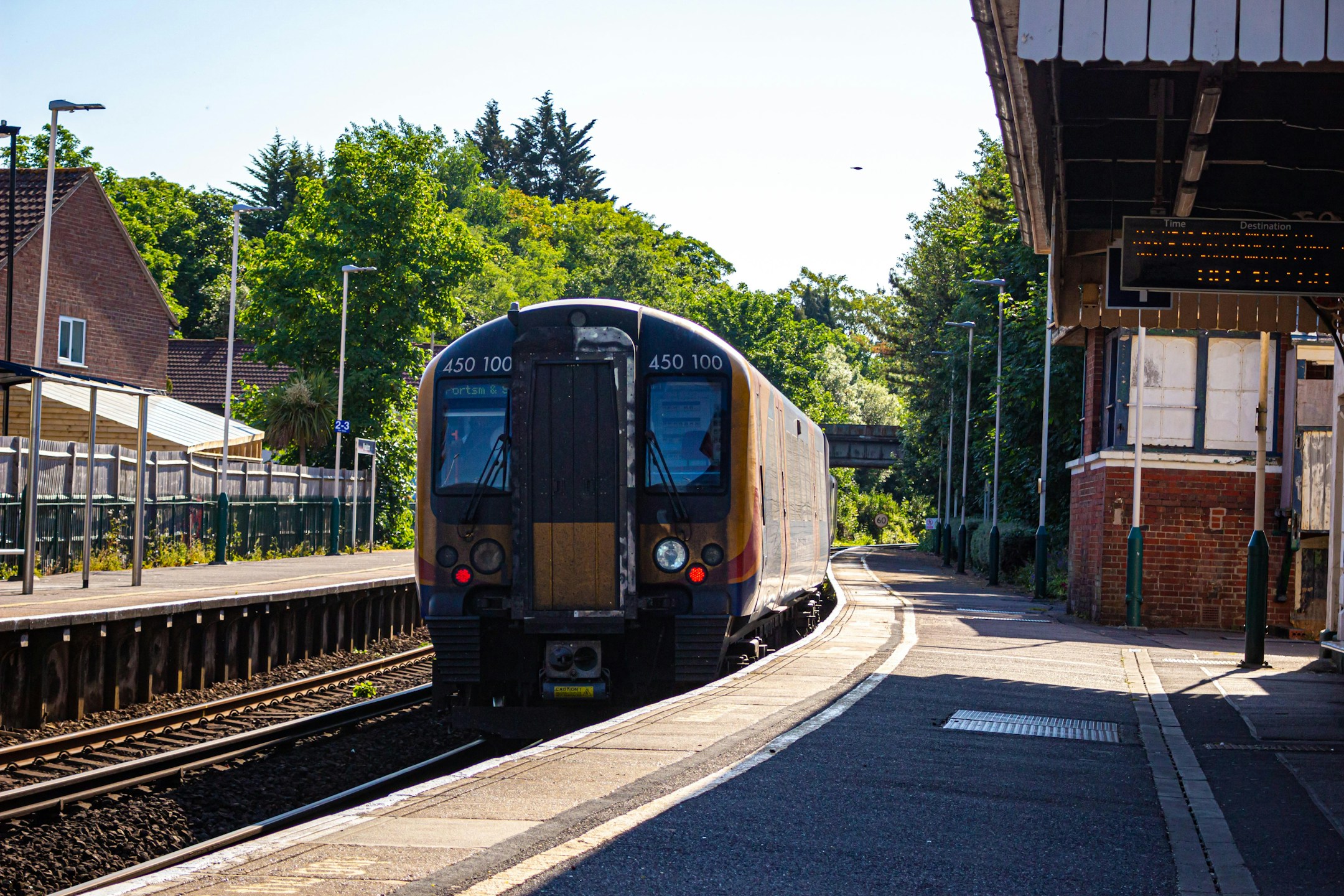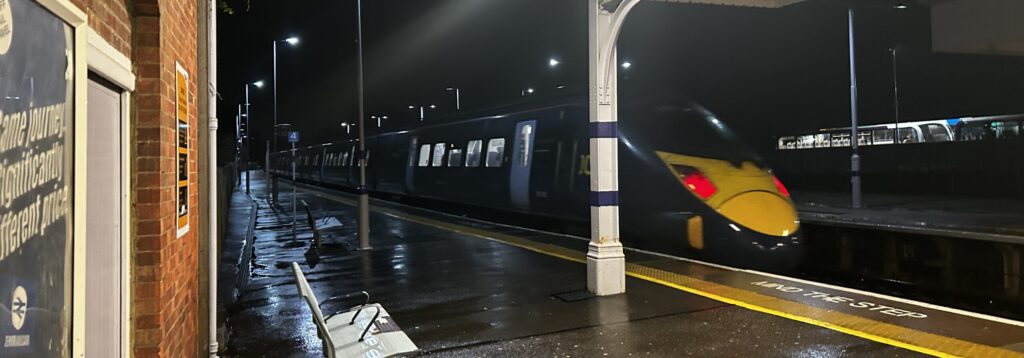Labour's Plan to Fix Britain's Railways, published on the 25 April, has a lot in common with the Williams-Shapps Plan for Rail of 2021. That's its greatest strength.
The plan is, in effect, the latest iteration in a long-running series of reviews into how our railways should be operated, starting with the commissioning of the Williams Review after the timetable meltdown of May 2018.
The first version of that review is probably out there somewhere, but we never got to see it, as its publication was repeatedly delayed (first by the 2019 General Election, then by COVID-19). By 2021, the situation it was addressing had dramatically changed – rail franchising was officially history, COVID-19 had depressed passenger numbers, and subsidies had significantly increased – and so the purpose of the review changed too. So it morphed into the Williams-Shapps Plan for Rail, which promised to set up a new arms-length government body, Great British Railways (GBR), to oversee the network. It would absorb Network Rail and the Rail Delivery Group in their entireties, along with much of the (micro)management work of the Department for Transport (DfT), effectively bringing together track and train, reversing much of the fragmentation of the network that took place during privatisation in the 1990s. The Government claimed the plan would save the taxpayers £1.5bn per year, by removing inefficiencies and duplication. Great British Railways wouldn’t operate the trains themselves – this would still be done by private companies, but through much more tightly-controlled Passenger Service Contracts. GBR would pay fixed fees for operators to run the trains, and would collect all fare revenue, in effect making permanent the interim system we’ve had since the start of the pandemic, but with GBR running the show instead of the DfT.
That plan was, on balance, a good idea. Yet, as you might have notice, three years on, little has happened. A GBR ‘Transition Team’ has been set up, and has been quietly working away in the background for the last three years (don’t ask me on what), but the necessary legislation to give GBR any power has been repeatedly delayed. In the meantime, the interim arrangements set up during the pandemic to nationalise revenue risk have become the new status quo, or what has ungenerously been termed the ‘zombie railway‘. Industrial relations collapsed and cancellations have climbed, with TransPennine Express and Avanti West Coast taking an exceptionally bad hit to performance and reputation, becoming posterchildren for a railway in crisis.
“The time for reviews is over”
Enter Labour’s Plan for Rail. The document isn’t a long read, much shorter than the Williams-Shapps Plan. It is in effect a manifesto promise, rather than a Government whitepaper, but beyond these superficial differences they both set out very similar arguments and visions. Both attribute many of the railway’s present woes to fragmentation, a lack of an overall strategy and purpose, and a lack of a centralised guiding/directing body. Both point out the centrality of the railway to Britain’s economy and wellbeing. Both believe setting up a new body, GBR, will help make the railway better. Both promise a better end-user experience, including a much-needed overhaul of the ticketing system. Both allude to ‘Schedule 8’, the contractual mechanism by which delays are investigated and attributed, being a waste of resources (having spent some time in the world of performance, I think this is a little unfair, but I digress). Both praise the role of open-access operators, promising to leave them space in the new structure. Both promise to increase the involvement of devolved and local governments, including the regional mayors. Neither say much about investment into infrastructural improvements, or how much the railway should actually be funded.
Labour’s main point of difference with Williams-Shapps is that under their version, GBR will operate trains themselves, generating a further £680m a year in savings from eliminating competition and dividends, rather than contracting operation out to private companies. By waiting for existing contracts to expire, and not buying rolling stock, it avoids high upfront capital costs, making it an easier sell in a political environment where spending is under intense scrutiny. The Labour plan also emphasises a reset on industrial relations, and a recognition of the railway’s workforce as “an asset to be nurtured rather than a cost to be cut”. It also promises to implement timetables that are “resource-led”, recognising the limitations of crew availability and infrastructure (which the over-ambitious May 2018 timetable famously did not). The Times recently reported that this could mean short-term service cuts; this may indeed be the case, although that probably just means removing services that were prone to unexpected cancellation already, giving passengers more certainty – this is already what has been done on TransPennine Express.
But the most important difference between the two plans are that three years have passed, and the Williams-Shapps Plan simply hasn’t been implemented. Any argument against renationalising train operation can effectively be neutralised by the question: “If the Conservatives believe their model of GBR is better, why have they sat on their hands for the last three years?”. Change on the railway, of course, takes time. Perhaps that’s why, rather than writing off the last three years of (partial) progress and starting again, with a brand new model, organisation, name and brand, Labour have chosen to adopt most of the Williams-Shapps Plan, including GBR’s name, with only minor modifications. Rather than more navel-gazing, Labour are promising change immediately, building on the previous work of the transition team and prioritising improvements that can be delivered within months of the election. If they follow through, it will be hard to criticise them for putting ideology in front of practicality, when they will effectively be able to claim that they’ve done a better job implementing the Conservatives’ policy than the Conservatives could.
I can’t help but agree that “the time for reviews is over”. We already have most of the ingredients we need for a more successful railway; passenger numbers have mostly recovered from the pandemic, especially in the leisure market (comparisons are always drawn to 2019, which was an all-time high). We have the expertise, understanding of passenger needs, and dedicated workforce we need. We’ve already spent six years mulling over what new structure our industry should take, including proposing a structure that would have mostly worked, but not implementing it. Labour’s pragmatic plans build on much of the hard work that has already been done, and trust those working in the industry to get on with the job. As such, it means a (hypothetical) new Labour Government will be able to move quickly, getting started on building a better railway. I think that’s what makes it a great plan.
This opinion article was written prior to David Frankal’s employment at Network Rail. This represents David
Frankal’s view in his capacity as Joint Chief Executive of Enroute and should
not be taken to represent the view of Network Rail or any other organisation.
Read some of our other blog posts




Thanks for sharing this insightful comparison between Labour’s Plan for Rail and the Williams-Shapps Plan. It’s clear that building on existing efforts could lead to quicker and more effective improvements in Britain’s railways.